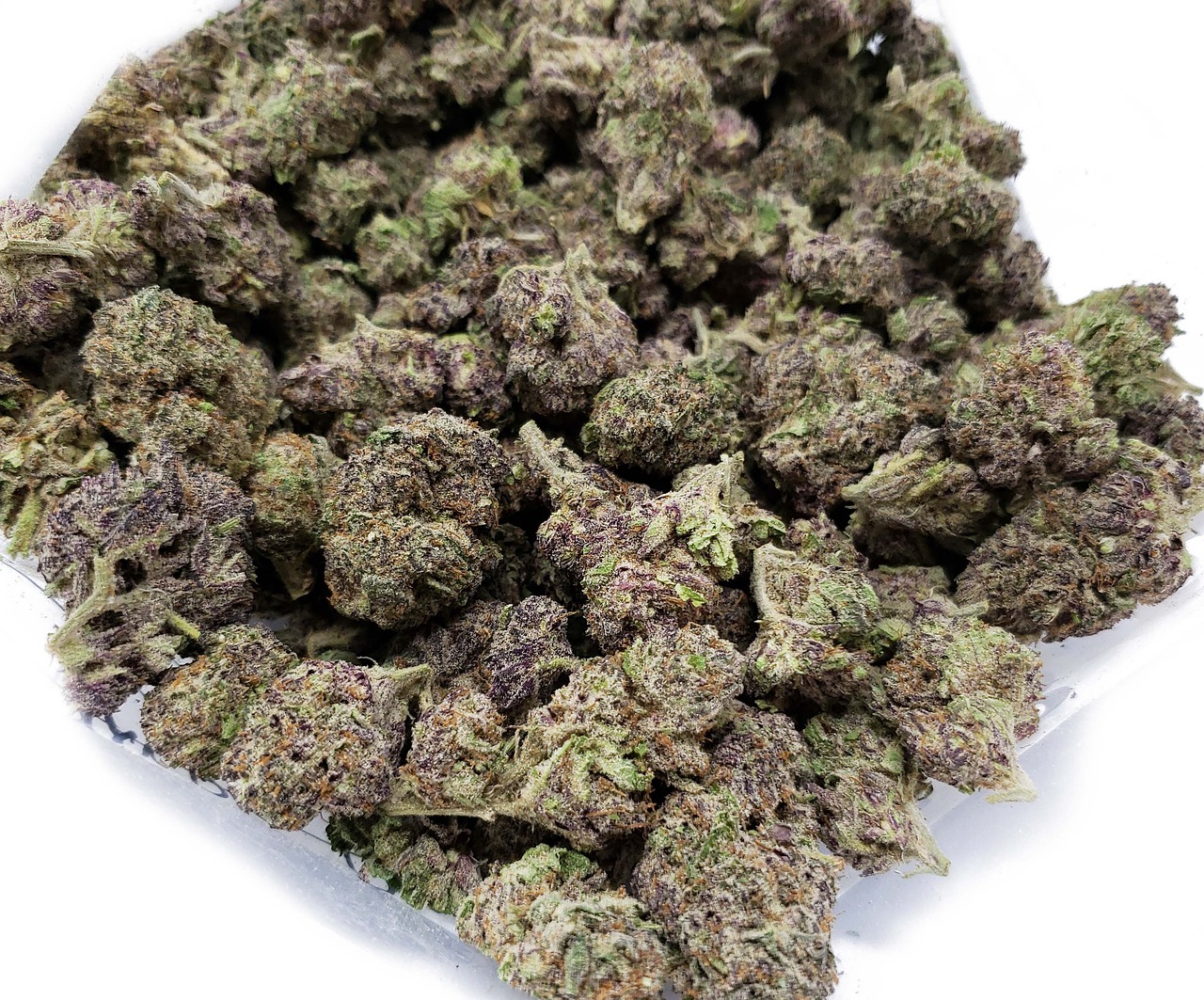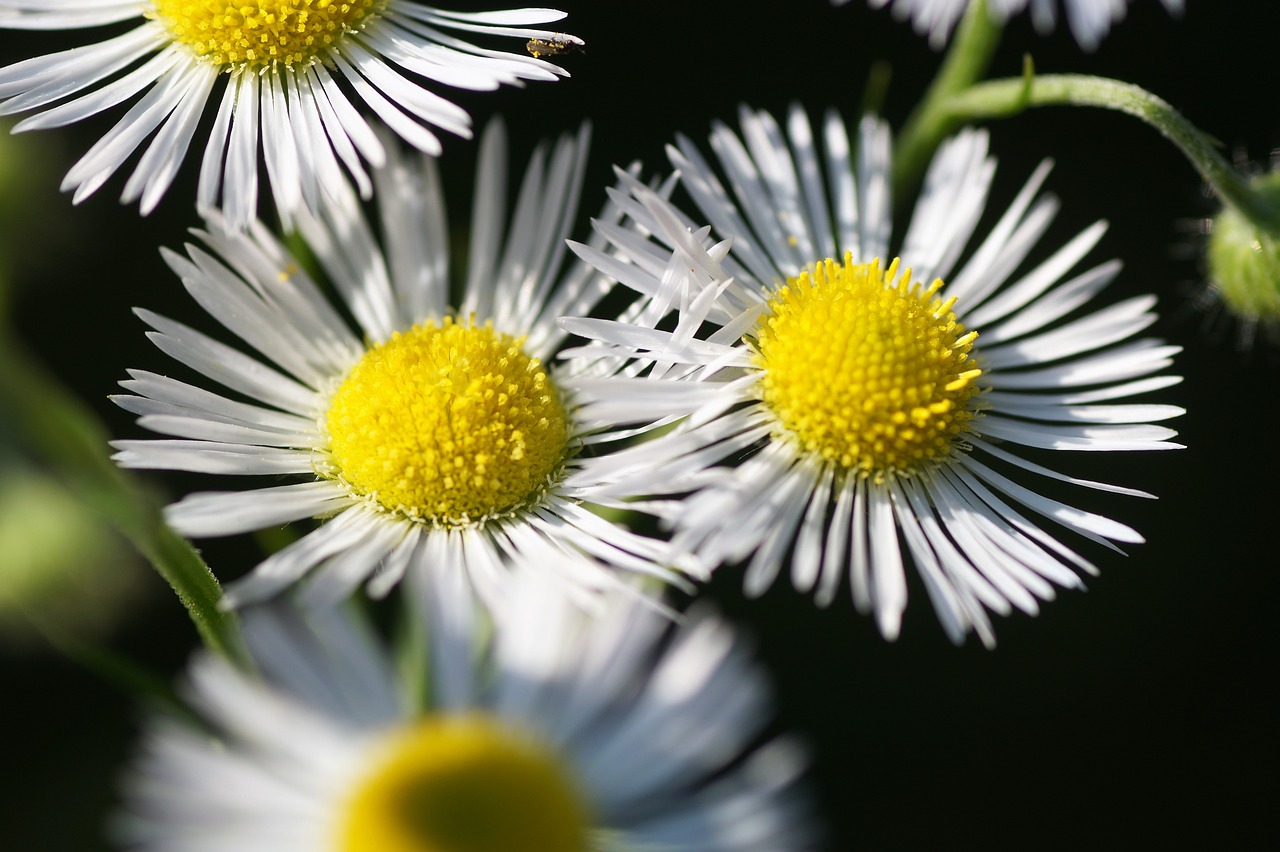How to Manage Weeds in Your Garden Eco-Friendly Way
Welcome to the wonderful world of gardening, where the beauty of nature blooms alongside the challenges it presents. Among these challenges, **weeds** can be particularly pesky. They seem to pop up overnight, stealing nutrients and sunlight from your beloved plants. But fear not! In this article, we’ll explore sustainable methods for controlling weeds that not only protect the environment but also promote healthy plant growth. So, roll up your sleeves, grab your gardening gloves, and let’s dive into some practical tips and strategies for effective weed management.
Before we can tackle the problem, it’s essential to understand what we’re up against. Weeds come in various shapes and sizes, but they all share one common trait: they compete with your plants for resources. Some weeds, like dandelions, have deep taproots that can suck moisture from the soil, while others, such as crabgrass, spread rapidly and can easily take over your garden bed. By recognizing the types of weeds and their growth habits, you can develop effective management strategies that minimize their negative effects. Think of weeds as uninvited guests at a party; the more you know about them, the better prepared you'll be to deal with them!
The best offense is a good defense! Preventing weed growth is often more effective than managing it after it appears. One of the most effective preventive techniques is **mulching**. By covering the soil with a layer of mulch, you can block sunlight from reaching weed seeds, effectively starving them of the light they need to germinate. Additionally, proper planting practices, such as spacing plants correctly and choosing native species, can help create a dense canopy that shades the soil and further reduces weed growth.
Mulching is a gardener's best friend when it comes to weed control. Not only does it prevent weeds, but it also improves soil health and moisture retention. Let’s break down the two main types of mulch: organic and inorganic.
Organic mulches, such as straw, wood chips, and grass clippings, offer a plethora of benefits. They not only suppress weeds but also enrich the soil as they decompose. When you use materials like straw, you create a cozy blanket for your soil that keeps it warm and moist. Plus, as these organic materials break down, they release valuable nutrients back into the earth. Imagine your garden thriving on a steady diet of organic goodness!
On the other hand, inorganic mulches, such as landscape fabric and gravel, provide long-lasting weed suppression. They don’t decompose, which means you won’t need to replenish them as often. When used correctly, these materials can enhance your garden's aesthetics while keeping weeds at bay. Just remember, while they may be low maintenance, they don’t contribute to soil health like organic options do.
Did you know that healthy soil can significantly reduce weed competition? That’s right! Practices like crop rotation and composting improve soil quality, creating an unfavorable environment for weeds to thrive. By rotating your crops, you disrupt the life cycles of weeds that may have adapted to your garden’s conditions. Composting not only enriches your soil but also helps suppress weed seeds through heat generated during the decomposition process. Think of your soil as a fortress; the stronger it is, the less likely weeds will invade!
Sometimes, the best way to deal with weeds is to get down and dirty—literally! Hand weeding is an eco-friendly method that allows for precise removal of weeds without harming your surrounding plants. It may sound labor-intensive, but with a few tips, you can minimize effort and maximize results. The key is to pull weeds when the soil is moist, as this makes it easier to extract the entire root system. If you leave even a small piece of root behind, it can quickly regenerate!
Timing is everything! The best times to weed are after a rain or during the early morning when the soil is damp. As for tools, a simple hand trowel or a weeding fork can make a world of difference. These tools allow you to dig deep and remove weeds with stubborn roots. Think of them as your trusty sidekicks in the battle against unwanted vegetation!
Consistency is key in weed management. Regular weeding sessions will prevent weed populations from becoming established and overwhelming your garden. Set aside a few minutes each week to patrol your garden for weeds. By making this a routine, you’ll keep your garden looking pristine and healthy. Remember, a little effort goes a long way!
- What are the best times to weed my garden?
The best times to weed are when the soil is moist, typically after a rain or in the morning. - How can I tell if a plant is a weed?
Weeds are typically fast-growing plants that compete with your garden plants for nutrients and space. If it’s in the wrong place and growing aggressively, it’s likely a weed! - Is mulching really effective against weeds?
Yes, mulching is one of the most effective methods for suppressing weed growth while enhancing soil health.

Understanding Weeds
Weeds are more than just pesky intruders in your garden; they are nature's way of reminding us of the delicate balance of ecosystems. Understanding weeds is crucial for any gardener who wants to maintain a healthy and flourishing garden. Weeds come in many shapes and sizes, and they can be categorized into different types based on their growth habits and lifecycle. For instance, some weeds are annuals, completing their life cycle in just one growing season, while others are perennials, returning year after year. Knowing the differences can help you devise effective strategies for their control.
Let’s delve into some common types of weeds you might encounter:
- Annual Weeds: These weeds germinate, grow, flower, and die within a single year. Common examples include crabgrass and purslane.
- Perennial Weeds: These weeds live for more than two years and often spread through extensive root systems. Examples include dandelions and bindweed.
- Biennial Weeds: These weeds take two years to complete their lifecycle. They typically grow leaves in the first year and flower in the second. A common example is foxglove.
Weeds can have a significant impact on your garden's health. They compete with your plants for nutrients, water, and light, which can stunt the growth of your desired plants. Moreover, certain weeds can harbor pests and diseases, creating further challenges for your garden. Think of weeds as uninvited guests at a party; they consume resources and attention that should be focused on your prized flowers and vegetables.
Another aspect to consider is the way weeds reproduce. Many weeds produce thousands of seeds that can remain dormant in the soil for years, waiting for the right conditions to sprout. This resilience makes them a formidable opponent in the battle for a weed-free garden. Understanding the lifecycle and reproductive strategies of weeds can empower you to take proactive measures to control them before they become a significant problem.
In summary, recognizing the various types of weeds and their growth habits is essential for developing effective management strategies. By understanding their nature, you can better prepare your garden to resist their encroachment, ensuring your plants have the best chance to thrive.

Preventive Measures
When it comes to keeping your garden weed-free, prevention is your best ally. Just like a good offense in sports, a proactive approach can save you a ton of time and effort later on. Think of your garden as a fortress; if you build strong defenses, the weeds won’t stand a chance! By implementing a combination of effective strategies, you can significantly reduce the chances of weeds invading your space.
One of the most effective preventive techniques is mulching. This involves covering the soil around your plants with a layer of material, which can either be organic or inorganic. Mulching not only suppresses weed growth but also helps retain moisture in the soil, giving your plants the hydration they need to thrive. It’s like giving your garden a cozy blanket that keeps it warm and protected!
Another crucial preventive measure is practicing proper planting techniques. When you space your plants appropriately and choose the right varieties for your garden, you create a competitive environment that makes it harder for weeds to establish themselves. Consider planting ground covers that spread quickly; they can act as a living mulch, blocking sunlight from reaching the weed seeds lurking in the soil. It’s all about teamwork in your garden!
Additionally, consider the timing of your planting. Early spring is the perfect time to sow seeds or transplant young plants, as this allows them to establish themselves before weeds start to take off. Just like in life, timing is everything! And don’t forget about crop rotation. By changing the types of plants you grow in specific areas of your garden each year, you disrupt the life cycles of weeds and pests, making it harder for them to get a foothold. It’s a clever little trick that keeps your garden dynamic and healthy.
Lastly, maintaining healthy soil is vital. The better your soil, the more robust your plants will be, and the less likely they are to be overrun by weeds. Adding compost or organic matter improves soil structure and nutrient content, creating an environment that favors your plants over unwanted invaders. It’s like giving your plants a nutritious meal that boosts their defenses!
In conclusion, by focusing on preventive measures such as mulching, proper planting, timing, crop rotation, and soil health, you can effectively keep weeds at bay. Remember, a little bit of effort upfront can lead to a flourishing garden that’s not only beautiful but also resilient against those pesky weeds!
- What is the best type of mulch to use? Organic mulches like straw and wood chips are excellent options as they enrich the soil while suppressing weeds.
- How often should I weed my garden? Regular weeding sessions, ideally every week or two, will help prevent weeds from establishing themselves.
- Can I use landscape fabric as mulch? Yes, landscape fabric is an effective inorganic mulch that provides long-lasting weed suppression.
- What are some signs of healthy soil? Healthy soil is dark, crumbly, and has a pleasant earthy smell. It should also drain well while retaining moisture.

Mulching Techniques
Mulching is one of the most effective and eco-friendly methods to control weeds in your garden. By applying a layer of material on the soil surface, you can create a barrier that prevents sunlight from reaching weed seeds, thus inhibiting their growth. Not only does mulching suppress weeds, but it also offers a myriad of benefits that contribute to the overall health of your garden. Think of mulch as a cozy blanket for your plants, keeping them warm, moist, and happy while simultaneously choking out those pesky weeds.
There are two primary types of mulch: organic and inorganic. Each has its own set of advantages, and the choice between them often depends on your specific gardening needs and aesthetic preferences. Organic mulches, such as straw, wood chips, and grass clippings, break down over time, enriching the soil with nutrients while also improving its structure. This is like giving your garden a nutrient boost every time it rains! On the other hand, inorganic mulches, like landscape fabric and gravel, provide long-lasting weed suppression and can enhance the visual appeal of your garden. They don’t decompose, which means they require less maintenance but can sometimes lack the soil-improving benefits of their organic counterparts.
When considering which type of mulch to use, think about the following factors:
- Soil Health: Organic mulches improve soil quality as they decompose, while inorganic options do not.
- Longevity: Inorganic mulches can last for years, whereas organic mulches need to be replenished regularly.
- Aesthetic Appeal: Inorganic mulches can provide a clean and polished look, while organic mulches offer a more natural appearance.
To make the most of your mulching efforts, it's important to apply the right thickness. A layer of 2 to 4 inches is generally recommended for effective weed suppression. However, be cautious not to pile mulch against the stems of your plants, as this can lead to rot. Instead, keep a small gap around the base of your plants to promote airflow and prevent moisture buildup.
In conclusion, mulching is a simple yet powerful technique to manage weeds while enhancing the health of your garden. Whether you opt for organic or inorganic materials, the key is to find what works best for your unique gardening situation. Remember, the right mulch can turn your garden into a thriving oasis, free from the clutches of invasive weeds!
Q: How often should I replace organic mulch?
A: Organic mulch typically needs to be replenished every year or two, depending on how quickly it decomposes and the local climate conditions.
Q: Can I use newspaper or cardboard as mulch?
A: Yes! Both newspaper and cardboard can be effective organic mulches. They block sunlight and decompose over time, enriching the soil. Just make sure to wet them down to prevent them from blowing away!
Q: How do I know if I need to mulch?
A: If you notice a lot of weeds in your garden or if your soil tends to dry out quickly, it's a good indication that mulching would be beneficial.
Q: Is it possible to over-mulch?
A: Yes, applying too much mulch can suffocate plants and lead to root rot. Aim for a layer of 2 to 4 inches for optimal results.

Organic Mulches
When it comes to managing weeds in your garden, are a fantastic ally. These natural materials not only suppress weed growth but also contribute to the overall health of your soil. Imagine your garden as a bustling community; organic mulches act like a protective blanket, shielding the soil from harsh conditions while fostering a thriving ecosystem beneath. Common organic mulches include straw, wood chips, and grass clippings, each bringing unique benefits to your garden.
Using organic mulches is akin to creating a cozy environment for your plants. For instance, straw is lightweight and perfect for vegetable gardens, as it allows moisture to penetrate while blocking sunlight from reaching pesky weed seeds. Wood chips, on the other hand, are excellent for flower beds and pathways, providing a robust barrier against weeds while enhancing your garden's aesthetic appeal. Grass clippings, which are often available for free, can be an effective mulch if applied correctly; just remember to let them dry out a bit to avoid matting, which can trap moisture and lead to rot.
One of the standout advantages of organic mulches is their ability to enrich the soil as they decompose. This process adds valuable nutrients back into the earth, creating a rich, fertile bed for your plants. Over time, organic mulches break down into compost, improving soil structure and water retention. This not only benefits your plants but also creates an environment that is less favorable for weeds, reducing their chances of survival. It's like giving your garden a multivitamin that boosts its defenses against unwanted intruders!
However, it's essential to apply organic mulches properly to maximize their effectiveness. Aim for a thickness of about 2-4 inches when spreading your mulch, ensuring that it covers the soil adequately but doesn't suffocate your plants. Regular maintenance is also key; as organic mulches break down, they will need to be replenished to maintain their weed-suppressing abilities. Think of it as a seasonal refresh for your garden, keeping it vibrant and healthy.
In summary, organic mulches are a powerful tool in your eco-friendly gardening arsenal. By choosing the right type of mulch and applying it effectively, you can create a thriving garden that minimizes weeds and maximizes plant health. So next time you're in the garden center, consider reaching for those organic options and watch your garden flourish!
- What are the best organic mulches for vegetable gardens? Straw and grass clippings are excellent choices, as they allow moisture in and prevent weed growth.
- How often should I replace my organic mulch? It's best to replenish your organic mulch every few months, depending on how quickly it decomposes in your garden.
- Can I use colored wood chips as mulch? It's advisable to use natural, untreated wood chips, as colored varieties may contain chemicals that could harm your plants.
- How thick should I apply organic mulch? Aim for a thickness of 2-4 inches to effectively suppress weeds while allowing water to penetrate.

Inorganic Mulches
When it comes to maintaining a beautiful and healthy garden, can be a gardener's best friend. Unlike organic mulches, which decompose over time and enrich the soil, inorganic mulches provide a long-lasting solution for weed suppression. These materials, such as landscape fabric, gravel, and rubber mulch, not only keep weeds at bay but also add a touch of elegance to your garden design.
One of the primary benefits of inorganic mulches is their durability. For instance, gravel can last for years without breaking down, making it a cost-effective choice for those who want to minimize maintenance. Additionally, landscape fabric is excellent for creating a barrier that prevents sunlight from reaching weed seeds, effectively halting their growth. When applied correctly, these materials can significantly reduce the need for chemical herbicides, making your gardening practices more eco-friendly.
However, it's essential to choose the right type of inorganic mulch for your specific garden needs. Here are some popular options:
- Landscape Fabric: This permeable material allows water and nutrients to reach the soil while blocking sunlight, making it ideal for flower beds and vegetable gardens.
- Gravel: Perfect for pathways and around shrubs, gravel not only suppresses weeds but also provides excellent drainage, preventing waterlogging.
- Rubber Mulch: Made from recycled tires, rubber mulch is a great option for playgrounds and garden beds, offering a unique aesthetic while being environmentally friendly.
When using inorganic mulches, it's crucial to apply them properly to maximize their effectiveness. Start by preparing your garden bed, removing any existing weeds and debris. Lay down a layer of landscape fabric or cardboard to create a barrier, then cover it with your chosen inorganic mulch to a depth of about 2-3 inches. This method will help ensure that weeds are effectively suppressed while allowing your plants to thrive.
Inorganic mulches can also enhance the visual appeal of your garden. With various colors and textures available, you can create a stunning contrast against your plants. For example, a dark-colored gravel can make vibrant flowers pop, while a light-colored mulch can create a soft, serene atmosphere. The aesthetic benefits, combined with their practical applications, make inorganic mulches a versatile choice for any gardener.
In summary, inorganic mulches offer a sustainable and effective way to manage weeds in your garden. By choosing the right materials and applying them correctly, you can enjoy a weed-free space that looks great and supports the health of your plants. So, why not give inorganic mulches a try? Your garden will thank you!

Soil Health and Weed Control
When it comes to gardening, the adage "healthy soil, healthy plants" rings especially true. Soil health plays a crucial role in managing weeds effectively. Healthy soil is like a vibrant community; it thrives with beneficial organisms and nutrients that support plant growth while simultaneously creating an environment that is hostile to weeds. Think of it as a well-balanced ecosystem where every element has its place and purpose. Weeds, often considered the unwanted guests at a garden party, can be kept at bay by fostering soil conditions that favor your desired plants over these pesky intruders.
One of the most effective strategies for improving soil health is through crop rotation. By rotating different crops in your garden each season, you disrupt the life cycles of weeds and pests that might thrive on a single type of plant. This practice not only enhances soil fertility but also minimizes weed competition. For example, if you plant legumes one season, they will enrich the soil with nitrogen, making it less favorable for weeds that prefer nutrient-poor conditions.
Another essential practice is composting. Adding organic matter to your soil through compost not only boosts its nutrient content but also improves its structure, allowing for better water retention and aeration. This creates a thriving environment for your plants while simultaneously making it tough for weeds to establish themselves. Think of compost as a superfood for your garden—it's packed with everything your plants need to outcompete those unwanted weeds.
Moreover, maintaining proper soil moisture is vital. Weeds often thrive in dry conditions, so ensuring your soil is adequately hydrated can give your plants the upper hand. Consider using a drip irrigation system or soaker hoses to deliver water directly to the roots of your plants, which minimizes evaporation and keeps the surrounding area less inviting for weeds.
In summary, focusing on soil health is a proactive approach to weed control. By implementing practices such as crop rotation, composting, and proper watering techniques, you can create a flourishing garden that not only supports your plants but also keeps those pesky weeds in check. Remember, a healthy garden is a happy garden, and with the right soil management techniques, you can enjoy the beauty of your plants without the hassle of weeds.
- What are the signs of healthy soil? Healthy soil is dark in color, crumbly in texture, and supports a variety of microorganisms. You might also notice earthworms and other beneficial insects.
- How often should I rotate my crops? It's generally recommended to rotate crops annually, but you can adjust based on your specific garden layout and plant needs.
- Can I use store-bought compost? Yes, store-bought compost can be beneficial, but ensure it’s organic and free from synthetic chemicals to maintain the eco-friendliness of your garden.

Hand Weeding Techniques
When it comes to maintaining a healthy garden, are invaluable. Not only do they allow for precise removal of weeds, but they also ensure that your surrounding plants remain unharmed. Imagine your garden as a beautiful tapestry; every plant has its place, and weeds are the uninvited guests that threaten to unravel it. So, how do we keep these pesky intruders at bay without resorting to harsh chemicals? Here are some effective strategies that can make your hand weeding efforts more efficient and enjoyable.
First off, timing is everything. Weeds are often most vulnerable right after a rain shower or when the soil is moist. This is when they are easier to pull out, roots and all. Think of it like fishing; the best time to catch fish is when they are most active. Additionally, early morning or late afternoon are ideal times for weeding as the sun is not too harsh, making the task less daunting. Remember, the goal is to make this chore as pleasant as possible!
Now, let’s talk tools. While hand weeding can be done with just your hands, having the right tools can significantly enhance your efficiency. Here’s a quick comparison of some popular hand weeding tools:
| Tool | Function | Best For |
|---|---|---|
| Hand Weeder | Precision weeding | Deep-rooted weeds |
| Garden Fork | Loosening soil | Established weeds |
| Hoe | Cutting weeds | Weeds in rows |
Using these tools effectively can save you time and effort. For instance, a hand weeder is fantastic for those stubborn weeds with deep roots, while a garden fork can help loosen the soil around them, making removal easier. It’s like having a toolbox for your garden—each tool has a specific purpose, and when used correctly, they can make a world of difference.
Another essential aspect of hand weeding is consistency. Just like keeping your home tidy, regular weeding sessions prevent weeds from establishing themselves and spreading. Aim for short, frequent weeding sessions rather than marathon ones. You might find that spending just 15 minutes a day can keep your garden looking pristine. It’s a bit like brushing your teeth; a little effort daily goes a long way in preventing bigger problems later on.
To make your hand weeding sessions more effective, consider creating a weeding schedule. This could be as simple as marking a day on your calendar or setting a reminder on your phone. By making it a part of your routine, you’ll find it easier to stay on top of weed management. And don’t forget to reward yourself! After a good weeding session, treat yourself to a cup of tea or a stroll around your blooming garden.
In conclusion, hand weeding is a simple yet powerful method for controlling weeds in your garden. By understanding the best times to weed, utilizing the right tools, and staying consistent, you can maintain a beautiful and healthy garden without compromising on your eco-friendly values. So roll up your sleeves, get your hands dirty, and enjoy the process of nurturing your garden!
- How often should I weed my garden? Regularly, ideally once a week or as needed, to prevent weeds from establishing.
- What is the best time of day to weed? Early morning or late afternoon when the sun is not too strong.
- Can I use my hands to weed? Absolutely! Hand weeding is effective, especially for small areas and delicate plants.
- What tools do I need for hand weeding? A hand weeder, garden fork, and hoe are great tools to have.

Timing and Tools
When it comes to hand weeding, timing is everything. Imagine trying to catch a butterfly; if you're too slow, it flutters away. Similarly, if you wait too long to tackle those pesky weeds, they can take over your garden, making your efforts feel like a losing battle. The best time to weed is after a rain when the soil is moist and the weeds are easier to pull out. This not only makes the task easier but also minimizes the chance of breaking the roots, which can lead to regrowth. Early mornings or late afternoons are also ideal times, as the sun isn’t scorching hot, making your weeding session much more pleasant.
Now, let’s talk about the tools that can make your weeding experience a breeze. While hand weeding can be done with just your hands, having the right tools can enhance your efficiency and comfort. A few essential tools to consider include:
- Hand Weeder: This small tool is perfect for digging out weeds with deep roots.
- Garden Fork: Great for loosening the soil around stubborn weeds.
- Weeding Knife: Ideal for cutting through tough weeds at the root level.
- Gloves: Protect your hands from thorns and dirt while giving you a better grip.
Using these tools can significantly reduce the amount of effort you need to put in. For instance, a hand weeder allows you to reach deep into the soil and extract the entire root, preventing that weed from coming back. On the other hand, a garden fork can help you aerate the soil while you’re at it, promoting a healthy environment for your plants. It’s a win-win!
In addition to timing and tools, consider creating a weeding schedule. Just like any other garden task, consistency is key. Setting aside a specific time each week to check for weeds can help you stay on top of the problem before it escalates. Think of it as your garden's regular check-up, ensuring everything is in tip-top shape.
By combining the right timing with the right tools, you can transform weeding from a dreaded chore into a manageable task. So, grab your gloves, choose your tools wisely, and make weeding a regular part of your gardening routine. Your plants will thank you for it!
Q: How often should I weed my garden?
A: It's best to check your garden at least once a week. This way, you can catch weeds when they're small and easier to remove.
Q: What is the best time of year to weed?
A: Spring and early summer are prime times for weeding, as this is when many weeds germinate. However, you should be vigilant throughout the growing season.
Q: Can I use any household tools for weeding?
A: Yes! Tools like kitchen forks or even old spoons can be effective for small weeding jobs. Just ensure they’re sturdy enough to handle the task.
Q: Are there any eco-friendly herbicides I can use?
A: Yes, there are several natural options like vinegar or boiling water that can help control weeds without harming the environment.

Staying Consistent
When it comes to managing weeds in your garden, consistency is your best friend. Just like a daily workout routine helps you stay fit, regular weeding sessions keep your garden in tip-top shape. Imagine your garden as a beautiful canvas; if you neglect it, the weeds will paint over your masterpiece with their chaotic growth. So, how do you maintain that beautiful balance? It’s all about making weeding a part of your gardening routine.
First off, set a schedule. Whether it’s once a week, bi-weekly, or even daily, find a rhythm that works for you. You might think, “Oh, I can just do it all in one go later,” but trust me, those weeds will multiply faster than rabbits! By dedicating a small amount of time regularly, you’ll prevent them from establishing deep roots and competing with your beloved plants. Consider this: a few minutes pulling weeds here and there can save you hours of back-breaking labor later.
Additionally, keep your eyes peeled for new growth. Weeds can be sneaky little devils, often sprouting in the most unexpected places. As soon as you spot them, tackle them immediately. Think of it like catching a cold—if you ignore those first few sniffles, you might end up bedridden! By being vigilant, you can nip those pesky weeds in the bud before they become a bigger problem.
Another tip for staying consistent is to use the right tools. A good weeding tool can make all the difference. Whether it’s a hand weeder, hoe, or even a garden fork, having the right equipment at your fingertips means you’re more likely to jump into action when you see those weeds. Keep your tools handy in a designated spot in your garden; this way, they’re always within reach when you need them.
Finally, consider enlisting some help. Gardening can be a fun group activity! Grab a friend, family member, or neighbor and make a weeding day out of it. Not only will you get the job done faster, but you’ll also enjoy some quality time together. Plus, sharing the task can make it feel less daunting and more like a community effort.
In summary, staying consistent with your weeding routine is crucial for maintaining a healthy garden. By implementing a regular schedule, being vigilant, using the right tools, and even getting some help, you can keep those weeds at bay and ensure your garden thrives. Remember, a little effort goes a long way in the fight against weeds!
- How often should I weed my garden?
It depends on the size of your garden and the types of weeds you have, but generally, a weekly check is ideal to prevent weeds from taking over. - What tools are best for hand weeding?
Hand weeders, hoes, and garden forks are excellent tools for effectively removing weeds without damaging surrounding plants. - Can I use mulch to prevent weeds?
Absolutely! Mulching is one of the best eco-friendly methods to suppress weeds while enriching your soil. - What are the signs that I need to weed?
If you notice weeds starting to flower or your plants are struggling for nutrients, it’s time to get to work!
Frequently Asked Questions
- What are the most common types of weeds in gardens?
Common garden weeds include dandelions, crabgrass, and chickweed. Each type has unique growth habits and can compete with your plants for nutrients, light, and water. Understanding these weeds is essential for effective management.
- How can I prevent weeds from growing in my garden?
Preventing weeds is often easier than removing them. You can use techniques like mulching, proper planting practices, and maintaining healthy soil. Mulching, in particular, blocks sunlight and suppresses weed growth while enriching the soil.
- What are the benefits of using organic mulch?
Organic mulches, such as straw and wood chips, not only suppress weeds but also improve soil health as they decompose. They retain moisture, regulate soil temperature, and provide nutrients to your plants, creating a thriving garden ecosystem.
- When is the best time to hand weed?
The best time to hand weed is after a rain or watering when the soil is moist. This makes it easier to pull out weeds, roots and all, without disturbing the surrounding plants. Regularly checking your garden helps keep weeds at bay.
- How can I make hand weeding more efficient?
Using the right tools, like a hand trowel or weeding fork, can make a world of difference. Also, staying consistent with your weeding schedule ensures that you catch weeds before they establish themselves and become a bigger problem.
- Is it possible to control weeds without chemicals?
Absolutely! There are many eco-friendly methods for weed control, such as mulching, hand weeding, and maintaining healthy soil through composting and crop rotation. These methods not only protect your plants but also the environment.
- What role does soil health play in weed management?
Healthy soil can significantly reduce weed competition. By improving soil structure and fertility through practices like composting, you create an environment where your desired plants can thrive while making it harder for weeds to establish.



















